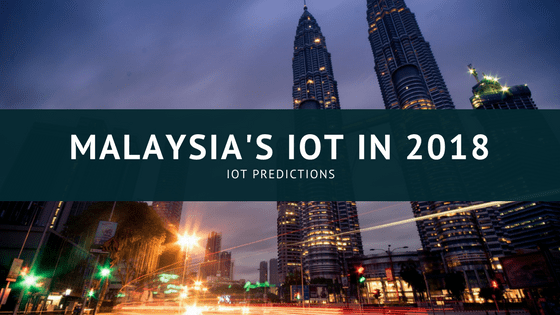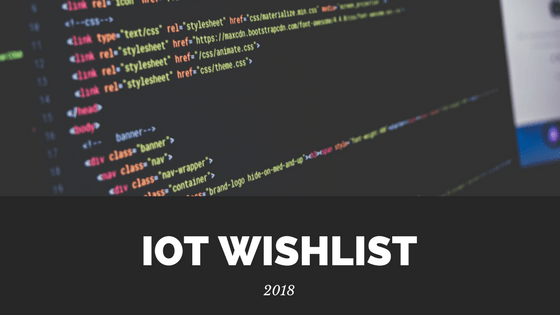IoT 2.0: Revolutionize Internet of Things (IoT 2.0) Using Blockchain
January 4th, 2018 Posted by favoriotadmin BLOG 0 thoughts on “IoT 2.0: Revolutionize Internet of Things (IoT 2.0) Using Blockchain”I can almost guarantee 100% in almost of my IoT Talks, the question regarding IoT security will be asked by the audience. It has been such a hot topic in the areas of research. When the first blockchain was conceptualized by an anonymous person or group known as Satoshi Nakamoto in 2008 with the introduction of Bitcoin, everyone seems to get excited how it can be implemented in other ways.
Forrester’s Dan Bieler (an analyst at Forrester co-authored the report “Disentangle Hype From Reality: Blockchain’s Potential For IoT Solutions) mentioned blockchain’s potential for IoT solutions. In a nutshell:
“As Internet of Things applications are by definition distributed it’s only normal that the distributed ledger technology, which blockchain is, will play a role in how devices will communicate directly between eachother (keeping a ledger and thus trail of not just devices but also how they interact and, potentially, in which state they are and how they are ‘handled’ in the case of tagged goods).
Blockchain is designed as a basis for applications that involve transaction and interactions. These can include smart contracts (smart contracts are automatically carried out when a specific condition is met, for instance regarding the conditions of goods or environmental conditions) or other smart applications that support specific Internet of Things processes. This way blockchain technology can improve not just compliance in the IoT but also IoT features and cost-efficiency.” – Dan Bieler
Nicolas Windpassinger, author of ‘Digitize or Die‘, an IoT book for digital transformation leaders, wrote about the practical aspects blockchain can address in IoT and how blockchain can accelerate the evolution of IoT.
“Blockchain technology promises to be the missing link enabling peer-to-peer contractual behavior without any third party to “certify” the IoT transaction. It answers the challenge of scalability, single point of failure, time stamping, record, privacy, trust and reliability in a very consistent way.” – Nicolas Windpassinger
The three benefits of blockchain for IoT, according to IBM: building trust, cost reduction and the acceleration of transactions.
You might want to read a good plain English version of “What is Blockchain?” written by PixelPrivacy.

Three key benefits of using blockchain for IoT according to IBM – source IBM infographic

Why blockchain is a game changer for IoT according to the IBM infographic
Let’s take a look at some of the application scenarios where Blockchain can revolutionize Internet of Things (IoT).
“In the scope of blockchain and IoT it’s interesting to look at the combination of blockchain and the Internet of Things as it’s used in insurance and will increasingly be, moving beyond the pure telematics model to the connection of real-time IoT data in various perspectives for various intelligent automated insurance policy applications.” – [1]
This Internet of Things depends on a Ledger of Things to track everything, ensure its reliability, and pay for its contribution. [2]
Transportation. Autonomous vehicles will get us safely wherever we need to go. They will intuitively take the fastest route, avoid construction, handle tolls, park all on its own, negotiate passing rates with other vehicles on the road, and communicate with traffic lights.
Infrastructure. We will use smart devices to monitor the integrity and other critical factors of road, rail lines, power and pipelines, bridges, runways, ports, and other public and private infrastructure to detect problems and initiate a response both rapidly and cost-effectively.
Energy, waste, and water management. Traditional utilities can use blockchain-enabled things for tracking production, distribution, consumption, and collection. New entrants without infrastructure are planning to create new markets such as the neighborhood energy microgrid.
Resource extraction and farming. This technology can help make expensive, highly specialized equipment available for just-in-time usage and cost recovery, improve worker safety, and compile “infinite data” analytics to identify new resources or advise on best practices. Sensors could help environmental protection agencies to regulate land usage.
Environmental monitoring. Weather sensors will make money collecting and selling air, water, and tremor data, giving people advance warnings of natural disasters, rising levels of pollutants, and monitoring lightning strikes and forest fires—all to increase emergency response time, save lives, and improve our predictive capability.
Health care. Blockchain-enabled hospitals could link the devices that manage medical records, inventory, equipment and pharmaceuticals to monitor and manage disease and improve quality control. Smart drugs could track themselves in clinical trials and present untampered evidence of their effectiveness.
Financial services and insurance. Financial institutions could use smart devices and the IoT to tag, track, and trace their claims on physical assets—like an air traffic control for priceless objects, antiquities, jewelry, the stuff of museums, anything ever handled by Sotheby’s and insured by Lloyd’s.
Smart documents. Like smart contracts, the coding of all documentation related to a particular thing—a patent, deed, warranty, provenance, registration, insurance, and inspection certification—could control the operation of that thing. If a vehicle has failed a safety inspection or its liability insurance has expired, the vehicle will not start.
Real estate management. Digital sensors can create marketplaces for vacant assets by enabling real-time discovery, usability, and payment. In the evenings, a conference room could moonlight as a classroom for neighbourhood youth.
Industrial operations. The global factory of things needs a global ledger of things. Factory managers will use smart devices and offer software services for monitoring customer demand, production lines, warehouse inventory, distribution, quality, maintenance, and performance data.
Household management. Numerous products and services are entering the market to allow automated and remote home monitoring beyond the “nanny cam” to include access controls, temperature adjustments, lighting, and restocking the pantry, the bathroom, and the garage. The smart home will optimize energy and the in-house experience.
Retail. Retailers will be able to personalize products and services to identifiable customers as they walk in or drive by, based on demographics, known interests, purchasing history, and whether those customers gave retailers permission.
“Leveraging blockchain to improve workflow and provide instant overviews. Example: Shipping Industry – Leveraging blockchain to improve workflow, provide instant overviews and keep track of paper trails. The transparency of the system will reduce fraud and mistakes, as well as improve inventory management and enhance the overall process saving the industry millions.” – [3]
“Managing asset life cycles on a blockchain – For example, an aircraft has a typically long life cycle with various owners and changing parts. It is imperative to know which parts have been replaced and when. By combing IoT, instrumentation and device authentication, an irrefutable provenance can be established for every part in an incontrovertible record. This allows reliability and safety to be traced by both passengers and prospective buyers.” – [3]
“Guaranteeing the safety and reliability of the food supply chain – Consumers are becoming increasingly aware and concerned about the origins of store bought food. Blockchain can be used to track and trace ingredients from multiple sources on a single, distributed ledger. This can simplify a complex and multifaceted process by permitting an instantaneous overview of every step in the chain.
This has consequences particularly for processed foods, where the provenance of ingredients is widespread. By implementing each step as a transaction in a blockchain, if there is a quality issue, the source can be pinpointed precisely and action can be taken quickly.” – [3]
“Secure from Botnets attack – Researchers at the University of New South Wales in Sydney, Australia, are taking a different approach to blockchain-based IoT security. In their model of a blockchain-secured smart home, a high-powered block miner replaces the usual internet router or media center to manage all local network transactions. This device not only manages the internal blockchain but also controls communication between home-based IoT devices and the outside world. It also authorizes new IoT devices and could curtail or cut off devices that are behaving badly. In this model, even if a lightbulb is captured by a botnet, the miner would see that the lightbulb is trying to attack an outside server and block its packets from leaving the home.” – [4]
Check out “Ultimate Privacy Guide” by Jared Clarke [6]
REFERENCES
[1] Blockchain and the Internet of Things: the IoT blockchain opportunity and challenge
[2] The Internet of Things Needs A Ledger of Things
[3] 4 key areas where blockchain can transform IoT
[4] How Blockchain Could Revolutionize The Internet Of Things

